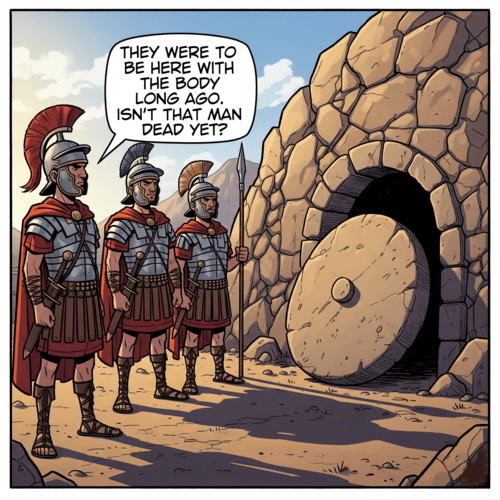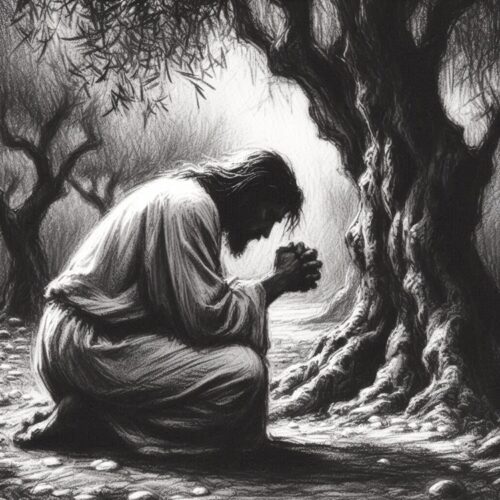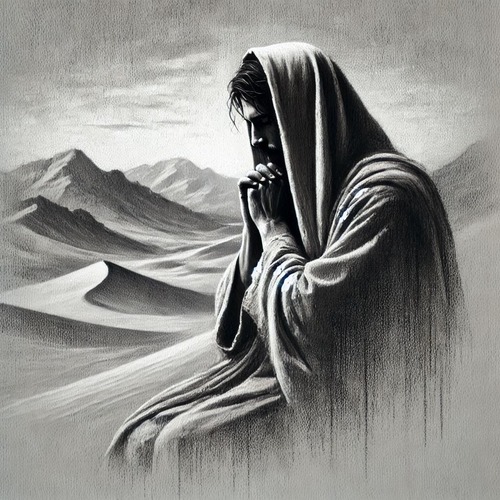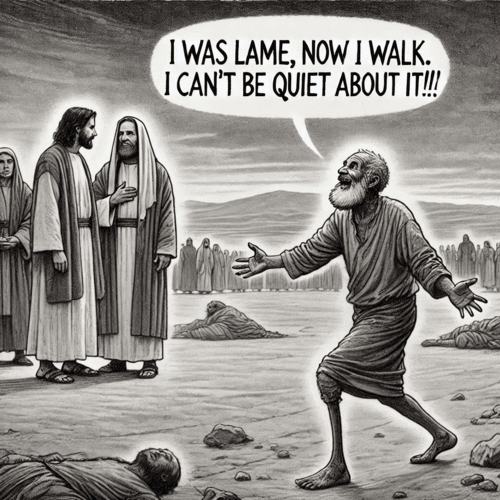The Hour Jesus Died: Do the Gospels Contradict Each Other?
0HOW MARK AND JOHN ACTUALLY AGREE ON THE TIME
At first glance, the Gospel accounts of the hour Jesus died seem to present a glaring contradiction. Mark 15:25 states, “It was the third hour when they crucified him.” But John 19:14 informs us “it was about the sixth hour” when Pilate presented Jesus to the crowd, saying “Behold your King!” before delivering him to be crucified.
Third hour versus sixth hour. Nine in the morning versus noon. This appears to be an irreconcilable difference—exactly the kind of contradiction sceptics point to when questioning the Bible’s reliability. But appearances can be deceiving…
THE KEY TO UNDERSTANDING: DIFFERENT TIME-KEEPING SYSTEMs
The solution lies in recognising first-century Palestine operated under multiple time-keeping systems, much like how we use both 12-hour and 24-hour clocks today, depending on the context.
- Mark used Jewish time-keeping, which began the day at sunrise (approximately 6 AM). Under this system, the “third hour” would be around 9 AM—three hours after sunrise.
- John used Roman civil time, which began at midnight, like our modern system. Under Roman reckoning, the “sixth hour” would be 6 AM—six hours after midnight.
This isn’t speculation. John consistently uses Roman time references throughout his Gospel, writing primarily for a Roman audience. Mark, writing for Jewish Christians, naturally employed the Jewish system they’d immediately relate to.
THE HOUR JESUS DIED: THE TIMELINE THAT ACTUALLY WORKS
When we apply this understanding, the events unfold in perfect harmony:
- Around 6 AM (John’s “sixth hour”): Pilate makes his final presentation of Jesus to the crowd, declaring “Behold your King!” This is the dramatic moment John captures—the culmination of the trial proceedings.
- Between 6 AM and 9 AM: The final condemnation occurs, preparations are made, and Jesus is led through Jerusalem’s streets to Golgotha. Anyone familiar with Roman crucifixion procedures knows this process took considerable time.
- Around 9 AM (Mark’s “third hour”): The actual crucifixion takes place. This is the moment Mark records—when the nails pierced Jesus’ hands and feet.
Far from contradicting each other, John and Mark are describing different pivotal moments in the same tragic sequence, each using the time-keeping system most natural to their audience.
WHY THIS SOLUTION IS COMPELLING
Historical Accuracy: Roman legal procedures were notoriously thorough and time-consuming. The three-hour window between Pilate’s final presentation and the actual crucifixion perfectly accommodates all the recorded events—the final sentencing, the gathering of the execution squad, the preparation of materials, and the journey to Golgotha.
Literary Precision: The very specificity of these time references suggests eyewitness accuracy, not fabrication. If the Gospel writers were inventing details, they would hardly create such an apparent contradiction.
Cultural Context: First-century Palestine was a cosmopolitan crossroads where multiple time-keeping systems coexisted. Jewish religious life operated on one schedule, Roman civil administration on another. The Gospel writers naturally reflected this reality.
Manuscript Evidence: Significantly, some ancient manuscripts of Mark actually read “sixth hour” instead of “third hour” in Mark 15:25, suggesting early scribes recognised the potential for confusion and attempted clarification.
ADDRESSING THE OBJECTIONS
- “Both writers used Jewish time“: This assumption ignores John’s consistent pattern of Roman time references throughout his Gospel and his primary Roman audience. John’s Gospel shows clear signs of being written for non-Jewish readers unfamiliar with Palestinian customs.
- “It’s just a copyist error”: While textual variants exist, they actually support harmonisation rather than requiring it. The original readings make perfect sense when properly understood.
- “The difference is irreconcilable”: This creates a false dilemma. Different time-keeping systems were a simple fact of first-century life, not an insurmountable obstacle to historical accuracy.
MULTIPLE WITNESSES, COMPLEMENTARY TESTIMONY
Consider how this mirrors real-world testimony. If two witnesses to a car accident both reported the exact same details in exactly the same words, we’d suspect collusion. But when witnesses provide different details from their unique perspectives—one noting the speedometer reading, another the clock time—their accounts become more credible, not less.
John focuses on the dramatic legal climax in Pilate’s court. Mark records the brutal physical reality of the crucifixion itself. Together, they provide a complete picture that neither could offer alone.
A HARMONY THAT STRENGTHENS FAITH
The cross stands at the centre of history, and the Gospel accounts of that pivotal moment prove themselves worthy of our trust. The crucifixion timing “contradiction” turns out to be a beautiful example of how the Gospels complement—rather than compete with or contradict each other. When we understand the historical context, we discover not careless contradiction but careful, accurate testimony from multiple witnesses using the conventions of their time.
The hour Jesus died is a testament to the reliability of Gospel testimony. John and Mark don’t disagree—they’re telling the same story from different vantage points, using different but equally valid time-keeping systems. In their apparent contradiction, we find profound harmony.
THE HOUR JESUS DIED: RELATED FAQs
What do major Reformed scholars say about this timing issue? Leading Reformed theologians like DA Carson, Craig Blomberg, and Andreas Köstenberger strongly support the dual time-keeping system solution. John Calvin himself addressed this in his commentaries, arguing the accounts are “easily reconciled” when we understand the different methods of counting hours. RC Sproul taught that apparent contradictions like this often reveal the Bible’s historical authenticity rather than undermining it.
- Did the early church fathers notice this apparent contradiction? Yes, early Christian writers were well aware of the timing difference and offered various explanations. Augustine suggested Mark’s “third hour” referred to the beginning of the three-hour period during which the crucifixion process unfolded. Chrysostom noted ancient timekeeping was naturally imprecise, allowing for reasonable variation in reported times. Their discussions show this wasn’t a problem that emerged centuries later but was recognised and addressed from the earliest periods in church history.
- How accurate was timekeeping in first-century Palestine? Ancient timekeeping was based on sundials and the sun’s position, making precise minute-by-minute accuracy impossible. Hours were typically divided into four quarters, so “about the sixth hour” could range from 5:30 to 6:30 AM in Roman time. This natural imprecision actually supports the Gospel accounts—exact timing would be more suspicious than the slight variations we see. The specificity of “third hour” and “about the sixth hour” reflects realistic ancient time references.
Why didn’t the Gospel writers clarify which time system they were using? The writers assumed their original audiences would understand the time-keeping conventions naturally. Mark’s Jewish-Christian readers would automatically think in terms of Jewish time, while John’s Roman audience would default to Roman civil time. This is similar to how Americans today don’t specify “Eastern Standard Time” when writing for American audiences—the context makes it clear. The lack of clarification actually supports the authenticity of the accounts as products of their specific historical contexts.
- Are there other examples of dual time systems in ancient literature? Absolutely. Roman historians like Tacitus and Suetonius regularly used Roman civil time, while Jewish writers like Josephus typically employed Jewish religious time-keeping. Even within the New Testament, we see this pattern—Luke’s Gospel and Acts, written for a Roman official, show Roman time conventions. This wasn’t unusual but was the natural result of different cultural contexts within the Roman Empire.
- What about the argument that John 19:14 refers to preparation day timing, not clock time? Some scholars suggest “about the sixth hour” refers to the sixth hour of preparation for Passover rather than the sixth hour of the day. While this interpretation has some merit, it’s less compelling than the dual time-keeping solution. The context clearly indicates temporal sequencing (“it was about the sixth hour”), and John uses similar time references elsewhere that are clearly chronological. The Roman time-keeping explanation remains the most straightforward reading of the text.
How does this resolution affect the doctrine of Bible inerrancy? This harmony actually strengthens confidence in Bible inerrancy by showing apparent contradictions often result from incomplete understanding of historical context rather than actual errors. The precision of the time references demonstrates the Gospel writers’ commitment to accuracy, not carelessness. Reformed theology has always maintained that Scripture is without error in its original manuscripts when properly interpreted—and this case perfectly illustrates that principle in action.
THE HOUR JESUS DIED: OUR RELATED POSTS
- What Were Jesus’ Final Words on the Cross?
- Last Words on the Cross: Into Your Hands I Commit My Spirit
- “It is Finished”: What Does Jesus Mean?
- John 19:28: Why Did Jesus Say ‘I Thirst’?
- ‘Behold Your Mother’: Why Does Jesus Entrust Mary to John?
- Father, Forgive Them: Who Was Jesus Praying For?
- Why Does Jesus Cry, ‘My God My God’?
Editor's Pick

Shouldn’t the Book of Enoch Be In the Bible? Why Isn’t It?
The Book of Enoch has fascinated scholars, theologians, and curious readers for centuries. Mentioned in the New Testament and revered [...]

‘Out of Egypt I Called My Son’: Did Matthew Misuse Hosea 11:1?
When Matthew quotes Hosea 11:1 in his Gospel—“Out of Egypt I called my son”—he draws a connection that has puzzled [...]

Bible Allusions: How They Enrich Our Grasp of God’s Word
Ever experienced that moment when you're reading Scripture and suddenly recognise an echo of another passage? That spark of recognition [...]

Old Testament Theophanies: What Purposes Did They Serve?
Throughout the Old Testament, we encounter remarkable moments when God manifests Himself in visible, often tangible forms to His people. [...]

When Words Fail: How the Holy Spirit Helps Us in Our Prayers
Ever sat down to pray and found yourself at a complete loss for words? Or perhaps you’ve prayed diligently but [...]

Isaiah 64:6: How Are Our Righteous Deeds Like Filthy Rags?
“We have all become like one who is unclean, and all our righteous deeds are like a polluted garment.” — [...]

The Greatest Yet the Least: How Is John the Baptist Both?
In Matthew 11:11, Jesus makes a statement that has puzzled Bible readers: “Truly I tell you, among those born of [...]
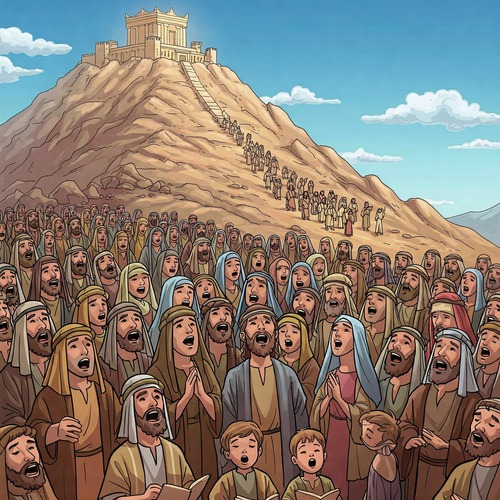
The Pilgrim’s Progress: Journeying Through the Psalms of Ascent
The Psalms of Ascent (Psalms 120-134) are a remarkable collection of fifteen songs that have guided God's people for millennia. [...]

Not Home Yet: How Scripture’s Exile Theme Shapes Our Faith
When we read Scripture carefully, a striking pattern emerges: God’s people are almost always on the move, displaced, or living [...]
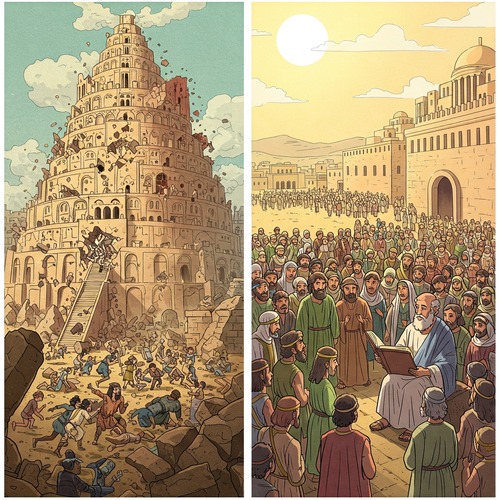
At Pentecost: God Fulfils Covenant and Reverses Babel
The scene is electrifying. Jerusalem, crowded with Jewish pilgrims from across the known world. A sound like rushing wind fills [...]
SUPPORT US:
Feel the Holy Spirit's gentle nudge to partner with us?
Donate Online:
Account Name: TRUTHS TO DIE FOR FOUNDATION
Account Number: 10243565459
Bank IFSC: IDFB0043391
Bank Name: IDFC FIRST BANK


